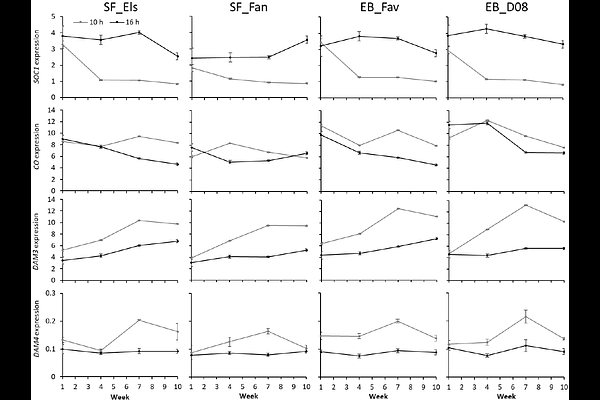Photoperiodic effects on early plant development in everbearing and seasonal flowering strawberry

Photoperiodic effects on early plant development in everbearing and seasonal flowering strawberry
David, S.; Ficov, G.; Marcelis, L. F. M.; Verdonk, J. C.
AbstractIn recent years, interest in vertical farming systems for strawberry cultivation has increased. Because of the increased costs associated with these systems, optimal use of resources, such as cultivation space and light, is a requirement. This necessitates a detailed understanding of plant development in different light conditions. The aim of this experiment was to analyze the effect of photoperiod on the early development of seasonal flowering and everbearing strawberry plants, and to compare the expression of genes known or suspected to be involved in the regulation of plant development between the two flowering types. Young, runner-propagated seasonal flowering and everbearing strawberry plants were grown under 10, 12, 14, or 16 h photoperiod in a climate-controlled vertical farm. Morphological and physiological measurements were made weekly. Leaf material was collected for gene expression analysis. There were not many differences in plant growth and development between the short day conditions (10 and 12 h photoperiods), or long day conditions (14 and 16 h photoperiods). Short day conditions had a repressive effect on vegetative growth in all cultivars, but this effect was reduced in everbearing cultivars compared to seasonal flowering cultivars. No notable differences were found in gene expression between the two flowering types.